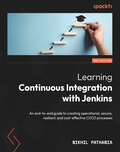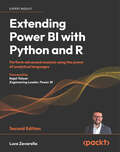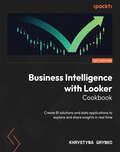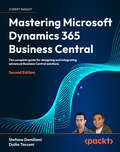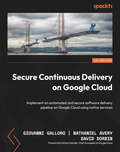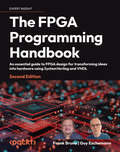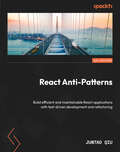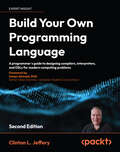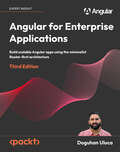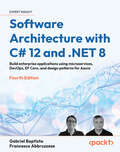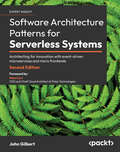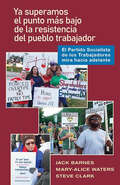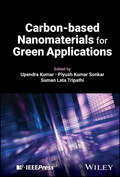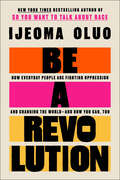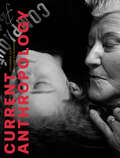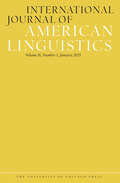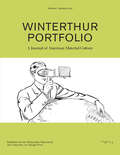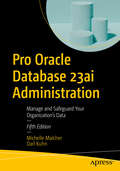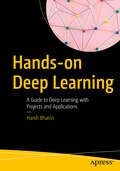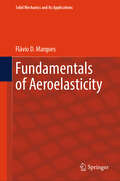- Table View
- List View
Learning Continuous Integration with Jenkins: An end-to-end guide to creating operational, secure, resilient, and cost-effective CI/CD processes
by Nikhil PathaniaIntegrate Jenkins, Kubernetes, and more on cloud into a robust, GitOps-driven CI/CD system, leveraging JCasC, IaC, and AI for a streamlined software delivery processKey FeaturesFollow the construction of a Jenkins CI/CD pipeline start to finish through a real-world exampleConstruct a continuous deployment (CD) pipeline in Jenkins using GitOps principles and integration with Argo CDCraft and optimize your CI pipeline code with ChatGPT and GitHub CopilotPurchase of the print or Kindle book includes a free PDF eBookBook DescriptionThis updated edition of Learning Continuous Integration with Jenkins is your one-stop guide to implementing CI/CD with Jenkins, addressing crucial technologies such as cloud computing, containerization, Infrastructure as Code, and GitOps. Tailored to both beginners and seasoned developers, the book provides a practical path to mastering a production-grade, secure, resilient, and cost-effective CI/CD setup. Starting with a detailed introduction to the fundamental principles of CI, this book systematically takes you through setting up a CI environment using Jenkins and other pivotal DevOps tools within the CI/CD ecosystem. You’ll learn to write pipeline code with AI assistance and craft your own CI pipeline. With the help of hands-on tutorials, you’ll gain a profound understanding of the CI process and Jenkins’ robust capabilities. Additionally, the book teaches you how to expand your CI pipeline with automated testing and deployment, setting the stage for continuous deployment. To help you through the complete software delivery process, this book also covers methods to ensure that your CI/CD setup is maintainable across teams, secure, and performs optimally. By the end of the book, you’ll have become an expert in implementing and optimizing CI/CD setups across diverse teams.What you will learnUnderstand CI with the Golden Circle theoryDeploy Jenkins on the cloud using Helm charts and Jenkins Configuration as Code (JCasC)Implement optimal security practices to ensure Jenkins operates securelyExtend Jenkins for CI by integrating with SonarQube, GitHub, and ArtifactoryScale Jenkins using containers and the cloud for optimal performanceMaster Jenkins declarative syntax to enrich your pipeline coding vocabularyEnhance security and improve pipeline code within your CI/CD process using best practicesWho this book is forThis book is for a diverse audience, from university students studying Agile software development to seasoned developers, testers, release engineers, and project managers. If you’re already using Jenkins for CI, this book will assist you in elevating your projects to CD. Whether you’re new to the concepts of Agile, CI, and CD, or a DevOps engineer seeking advanced insights into JCasC, IaC, and Azure, this book will equip you with the tools to harness Jenkins for improved productivity and streamlined deliveries in the cloud.
Azure Data Factory Cookbook: Build ETL, Hybrid ETL, and ELT pipelines using ADF, Synapse Analytics, Fabric and Databricks
by Dmitry Foshin Tonya Chernyshova Dmitry Anoshin Xenia IretonData Engineers guide to solve real-world problems encountered while building and transforming data pipelines using Azure's data integration toolKey FeaturesSolve real-world data problems and create data-driven workflows with ease using Azure Data FactoryBuild an ADF pipeline that operates on pre-built ML model and Azure AIGet up and running with Fabric Data Explorer and extend ADF with Logic Apps and Azure functionsBook DescriptionThis new edition of the Azure Data Factory book, fully updated to reflect ADS V2, will help you get up and running by showing you how to create and execute your first job in ADF. There are updated and new recipes throughout the book based on developments happening in Azure Synapse, Deployment with Azure DevOps, and Azure Purview. The current edition also runs you through Fabric Data Factory, Data Explorer, and some industry-grade best practices with specific chapters on each. You’ll learn how to branch and chain activities, create custom activities, and schedule pipelines, as well as discover the benefits of cloud data warehousing, Azure Synapse Analytics, and Azure Data Lake Gen2 Storage. With practical recipes, you’ll learn how to actively engage with analytical tools from Azure Data Services and leverage your on-premises infrastructure with cloud-native tools to get relevant business insights. You'll familiarize yourself with the common errors that you may encounter while working with ADF and find out the solutions to them. You’ll also understand error messages and resolve problems in connectors and data flows with the debugging capabilities of ADF. By the end of this book, you’ll be able to use ADF with its latest advancements as the main ETL and orchestration tool for your data warehouse projects.What you will learnBuild and Manage data pipelines with ease using the latest version of ADFConfigure, load data, and operate data flows with Azure SynapseGet up and running with Fabric Data FactoryWorking with Azure Data Factory and Azure PurviewCreate big data pipelines using Databricks and Delta tablesIntegrate ADF with commonly used Azure services such as Azure ML, Azure Logic Apps, and Azure FunctionsLearn industry-grade best practices for using Azure Data FactoryWho this book is forThis book is for ETL developers, data warehouse and ETL architects, software professionals, and anyone else who wants to learn about the common and not-so-common challenges faced while developing traditional and hybrid ETL solutions using Microsoft's Azure Data Factory. You’ll also find this book useful if you are looking for recipes to improve or enhance your existing ETL pipelines. Basic knowledge of data warehousing is a prerequisite.
Extending Power BI with Python and R: Perform advanced analysis using the power of analytical languages
by Luca ZavarellaIngest, transform, manipulate, and visualize your data beyond Power BI's capabilities. Purchase of the print or Kindle book includes a free eBook in PDF format.Key FeaturesDiscover best practices for using Python and R in Power BI by implementing non-trivial codeEnrich your Power BI dashboards using external APIs and machine learning modelsCreate any visualization, as complex as you want, using Python and R scriptsBook DescriptionThe latest edition of this book delves deep into advanced analytics, focusing on enhancing Python and R proficiency within Power BI. New chapters cover optimizing Python and R settings, utilizing Intel's Math Kernel Library (MKL) for performance boosts, and addressing integration challenges. Techniques for managing large datasets beyond available RAM, employing the Parquet data format, and advanced fuzzy matching algorithms are explored. Additionally, it discusses leveraging SQL Server Language Extensions to overcome traditional Python and R limitations in Power BI. It also helps in crafting sophisticated visualizations using the Grammar of Graphics in both R and Python. This Power BI book will help you master data validation with regular expressions, import data from diverse sources, and apply advanced algorithms for transformation. You'll learn how to safeguard personal data in Power BI with techniques like pseudonymization, anonymization, and data masking. You'll also get to grips with the key statistical features of datasets by plotting multiple visual graphs in the process of building a machine learning model. The book will guide you on utilizing external APIs for enrichment, enhancing I/O performance, and leveraging Python and R for analysis. You'll reinforce your learning with questions at the end of each chapter.What you will learnConfigure optimal integration of Python and R with Power BIPerform complex data manipulations not possible by default in Power BIBoost Power BI logging and loading large datasetsExtract insights from your data using algorithms like linear optimizationCalculate string distances and learn how to use them for probabilistic fuzzy matchingHandle outliers and missing values for multivariate and time-series dataApply Exploratory Data Analysis in Power BI with RLearn to use Grammar of Graphics in PythonWho this book is forThis book is for business analysts, business intelligence professionals, and data scientists who already use Microsoft Power BI and want to add more value to their analysis using Python and R. Working knowledge of Power BI is required to make the most of this book. Basic knowledge of Python and R will also be helpful.
Business Intelligence with Looker Cookbook: Create BI solutions and data applications to explore and share insights in real time
by Khrystyna GrynkoUse Looker for visualizing data, data analysis, and reporting, and learn how to connect to your data, build dashboards and reports, and share insights with your teamKey FeaturesExplore data visualization, analysis, and reporting with Looker to gain insights from your dataConnect to data sources, build dashboards, and create reports to track and share key metricsShare insights with your team to make better business decisionsPurchase of the print or Kindle book includes a free PDF eBookBook DescriptionLooker is a data analytics and business intelligence platform that allows organizations to explore, analyze, and visualize their data. It provides tools for data modeling, exploration, and visualization, enabling you to gain insights from your data to make informed business decisions. You’ll start with the basics, from setting up your Looker environments to configuring views and models using LookML. As you progress, you’ll delve into more advanced topics, such as navigating data in Explore, tailoring dashboards to your needs, and adding dynamic elements for interactivity. Along the way, you'll gain invaluable troubleshooting skills to tackle common issues and optimize your Looker usage, ensuring a smooth and seamless experience. Furthermore, the book extends your understanding beyond the basics, equipping you with the knowledge you need to develop Looker applications and seamlessly integrate them with other tools and applications. You'll also explore advanced techniques for harnessing Looker's full potential, empowering you to establish data-driven decision-making and innovation within your organization. By the end of this BI book, you'll have gained a solid understanding of how to use Looker to find important information, make tasks easier, and derive important insights.What you will learnUnderstand Looker's key components, including LookML, data models, and dashboards.Explore Looker's functionality, including custom fields, calculations, and visualizations.Work with Looker dashboards using dynamic elements like links and actions.Use different types of filters for dimensions to create dashboardsDevelop Looker applications using essential tools and frameworksExplore additional applications for the Looker organizationIntegrate Looker with other tools using APIs, connectors, and data pipelinesWho this book is forIf you’re a business analyst, data analyst, or BI developer who wants to get well-versed with the features of Looker, this book is for you. Basic knowledge of business intelligence is required to get started.
Mastering Microsoft Dynamics 365 Business Central: The complete guide for designing and integrating advanced Business Central solutions
by Stefano Demiliani Duilio TacconiUtilize Microsoft Dynamics 365 Business Central's most recent capabilities to create bespoke business management solutions using best practices learned along the way from veterans in the industry. Purchase of the print or Kindle book includes a free PDF eBookKey FeaturesExtend Business Central's functionalities through Azure, Power Platform, GitHub, and custom extensionsUnlock the potential of data exchange and functionality expansion by integrating with external systems using APIs and ODataBuild reliable, maintainable, and continuously improving solutions while writing performant, well-structured code and using telemetries and DevOpsBook DescriptionThis book dives straight into guiding you through the process of building real-world solutions with the AL language and Visual Studio Code. It emphasizes best practices and extensibility patterns to ensure your extensions are well-structured, maintainable, and meet the needs of modern businesses. You'll learn advanced AL techniques, report creation methods, debugging strategies, and how to leverage telemetries for monitoring. Additionally, it covers performance optimization practices and API integration to help you create efficient and interconnected solutions. With a focus on extension development, this new edition allows you to jump right into coding without spending time on setup processes. This book introduces new chapters covering essential tasks that Business Central developers frequently encounter, such as file handling and printing management. Finally, the book expands its scope by including chapters on various integration aspects, including VS Code extensions, GitHub DevOps, Azure services, and Power Platform integrations. We’ll wrap up by covering Copilot capabilities in Business Central and how you can create your own generative AI copilots. By mastering these concepts and techniques, you'll be well-equipped to create powerful and customized solutions that extend the capabilities of Dynamics 365 Business Central.What you will learnDeveloping a customized solution for Dynamics 365 Business CentralWriting performant code following extensibility patternsHandling reporting, files, and printing on a cloud environmentHandling Business Central telemetries with AzureWriting APIs and integrations for Dynamics 365 Business CentralApplying DevOps and CI/CD to development projects by using GitHubIntegrating Business Central with Power PlatformPublishing your solutions to AppSource marketplaceManage Copilot capabilities and create your own generative AI copilotWho this book is forThis book is intended for new developers who want to get started with Dynamics 365 Business Central. Professionals with expertise will also benefit from this book by enhancing their knowledge and comprehension of Dynamics 365 Business Central development platform and best practices
Secure Continuous Delivery on Google Cloud: Implement an automated and secure software delivery pipeline on Google Cloud using native services
by Giovanni Galloro Nathaniel Avery David DorbinBuild an end-to-end continuous delivery pipeline on Google Cloud and secure your software supply chain using GCP tools and services including Cloud Code, Cloud Workstations, Cloud Build, Artifact Registry, and Cloud DeployKey FeaturesGain hands-on experience building an end-to-end software delivery pipeline using Google Cloud servicesDeploy your applications on GKE, Cloud Run, and across hybrid and multi-cloud environmentsSecure pipelines with artifact scanning, dependency vulnerability checks, signed provenance, and admission controlPurchase of the print or Kindle book includes a free PDF eBookBook DescriptionContinuous delivery, a cornerstone of modern software engineering, facilitates quick and secure software delivery using a robust toolkit encompassing automated builds, testing, source code management, artifact storage, and deployment. Whether you integrate tools from different providers or use a set of managed services from a single cloud provider, the goal is to streamline setup, integration, and management. This book focuses on continuous delivery on Google Cloud. Starting with an introduction to continuous delivery and secure software supply chain concepts, this book uses hands-on exercises to demonstrate how to continuously test your application with Skaffold and Cloud Code, leverage AI-assisted code generation with Cloud Code and Cloud Workstations, and automate your continuous integration with Cloud Build. You’ll see how to store and scan your software artifacts on Artifact Registry, orchestrate deployments with Cloud Deploy, and release your software on GKE and Cloud Run, configured to admit only trusted code. Using an example application, you’ll implement tools for creating an end-to-end delivery pipeline using Google Cloud services. By the end of this book, you’ll be able to build a secure software delivery pipeline from development to production using Google Cloud managed services and best practices.What you will learnCreate an end-to-end continuous delivery pipeline using Cloud Build, Artifact Registry, and Cloud DeployDevelop, build, and deploy container-based applications with Skaffold and Cloud CodeExperiment with AI-assisted code generation in Cloud CodeAutomate continuous integration with Cloud Build triggersAutomate deployment on GKE and Cloud Run through Cloud DeployEnhance pipeline security with Artifact Analysis, Binary Authorization, and SLSAApply best practices, including logging and monitoringWho this book is forThis book is for DevOps, Platform, and Cloud Engineers tasked with managing application deployment and creating continuous delivery pipelines who want to automate workflows in a fully managed, scalable, and secure platform. Software developers involved in application delivery and interested in harnessing Google Cloud tools to optimize development flow status and feedback loop will also find this book useful. Prior knowledge of Google Cloud fundamentals (including Cloud APIs and IAM), software delivery, containerization, and Kubernetes will enhance the reading experience.
The FPGA Programming Handbook: An essential guide to FPGA design for transforming ideas into hardware using SystemVerilog and VHDL
by Frank Bruno Guy EschemannDevelop solid FPGA programming skills in SystemVerilog and VHDL by crafting practical projects – VGA controller, microprocessor, calculator, keyboard – and amplify your know-how with insider industry knowledge, all in one handbook. Purchase of the print or Kindle book includes a free eBook in PDF formatKey FeaturesExplore a wide range of FPGA applications, grasp their versatility, and master Xilinx FPGA tool flowMaster the intricacies of SystemVerilog and VHDL to develop robust and efficient hardware circuitsRefine skills with CPU, VGA, and calculator projects for practical expertise in real-world applicationsBook DescriptionIn today's tech-driven world, Field Programmable Gate Arrays (FPGAs) are foundation of many modern systems. Transforming ideas into reality demands a deep dive into FPGA architecture, tools, and design principles. This FPGA book is your essential companion to FPGA development with SystemVerilog and VHDL, tailored for both beginners and those looking to expand their knowledge. In this edition, you will gain versatility in FPGA design, opening doors to diverse opportunities and projects in the field. Go beyond theory with structured, hands-on projects, starting from simple LED control and progressing to advanced microcontroller applications, highly sought after in today's FPGA job market. You will go from basic Boolean logic circuits to a resource-optimized calculator, showcasing your hardware design prowess. Elevate your knowledge by designing a VGA controller, demonstrating your ability to synthesize complex hardware systems. Use this handbook as your FPGA development guide, mastering intricacies, igniting creativity, and emerging with the expertise to craft hardware circuits using SystemVerilog and VHDL. This isn't just another technical manual; it's your exhilarating journey to master both theory and practice, accelerating your FPGA design skills to soaring new heights. Grab your copy today and start this exciting journey!What you will learnUnderstand the FPGA architecture and its implementationGet to grips with writing SystemVerilog and VHDL RTLMake FPGA projects using SystemVerilog and VHDL programmingWork with computer math basics, parallelism, and pipeliningExplore the advanced topics of AXI and keyboard interfacing with PS/2Discover how you can implement a VGA interface in your projectsExplore the PMOD connectors-SPI and UART, using Nexys A7 boardImplement an embedded microcontroller in the FPGAWho this book is forThis FPGA design book is for embedded system developers, engineers, and programmers who want to learn FPGA design using SystemVerilog or VHDL programming from scratch. FPGA designers looking to gain hands-on experience with real-world projects will also find this book useful. Whether you are new to FPGA development or seeking to enhance your skills, this book provides a solid foundation and practical experience in FPGA design.
React Anti-Patterns: Build efficient and maintainable React applications with test-driven development and refactoring
by Juntao QiuMaster efficient coding practices, address common anti-patterns, and construct scalable React apps with practical insights and techniquesKey FeaturesIdentify and address React anti-patterns while learning testing strategies and refactoring techniques for efficient codebasesExplore data modelling, design patterns, and state management in ReactEnhance code quality, maintainability, and scalability in React applicationsPurchase of the print or Kindle book includes a free PDF eBookBook DescriptionTake your React development skills to the next level by examining common anti-patterns with expert insights and practical solutions, to refine your codebases into sophisticated and scalable creations. Through this easy-to-follow guide, React Anti-Patterns serves as a roadmap to elevating the efficiency and maintainability of your React projects. You’ll begin by familiarizing yourself with the essential aspects of React before exploring strategies for structuring React applications and creating well-organized, modular, and easy-to-maintain codebases. From identifying and addressing common anti-patterns using refactoring techniques to harnessing the power of test-driven development (TDD), you’ll learn about the tools and techniques necessary to create reliable and robust tests. As you advance, you’ll get to grips with business logic and design patterns that offer solutions to prevalent challenges faced in React development. The book also offers insights into using composition patterns, such as code splitting and multiple entry points, to enhance the flexibility and modularity of your React applications, guiding you through end-to-end project implementation. By the end of this React book, you’ll be able to overcome common challenges and pitfalls to transform your React projects into elegant, efficient, and maintainable codebases.What you will learnFormulate comprehensive testing strategies and leverage testing framework capabilitiesImplement TDD practices to drive the development process and elevate code quality, especially in extensive React projectsUse design patterns effectively to create scalable and reusable React componentsApply established software design principles to craft resilient applications within ReactAchieve modularity and loose coupling in React codebases by mastering the separation of concernsEnsure clean code by adhering to software design best practices in React developmentWho this book is forThis book is for React developers of all skill levels who share a passion for crafting efficient and maintainable codebases. Whether you're a beginner who wants to establish a solid foundation or an experienced developer looking to refine your skills, this guide offers invaluable insights, practical solutions, and real-world examples to enable you to excel at building scalable, elegant, and high-performing React applications.
Build Your Own Programming Language: A programmer's guide to designing compilers, interpreters, and DSLs for modern computing problems
by Clinton L. JefferyLearn to design your own programming language in a hands-on way by building compilers, using preprocessors, transpilers, and more, in this fully-refreshed second edition, written by the creator of the Unicon programming language. Purchase of the print or Kindle book includes a free PDF eBookKey FeaturesTakes a hands-on approach; learn by building the Jzero language, a subset of Java, with example code shown in both the Java and Unicon languagesLearn how to create parsers, code generators, scanners, and interpretersTarget bytecode, native code, and preprocess or transpile code into a high-level languageBook DescriptionThere are many reasons to build a programming language: out of necessity, as a learning exercise, or just for fun. Whatever your reasons, this book gives you the tools to succeed. You’ll build the frontend of a compiler for your language and generate a lexical analyzer and parser using Lex and YACC tools. Then you’ll explore a series of syntax tree traversals before looking at code generation for a bytecode virtual machine or native code. In this edition, a new chapter has been added to assist you in comprehending the nuances and distinctions between preprocessors and transpilers. Code examples have been modernized, expanded, and rigorously tested, and all content has undergone thorough refreshing. You’ll learn to implement code generation techniques using practical examples, including the Unicon Preprocessor and transpiling Jzero code to Unicon. You'll move to domain-specific language features and learn to create them as built-in operators and functions. You’ll also cover garbage collection. Dr. Jeffery’s experiences building the Unicon language are used to add context to the concepts, and relevant examples are provided in both Unicon and Java so that you can follow along in your language of choice. By the end of this book, you'll be able to build and deploy your own domain-specific language.What you will learnAnalyze requirements for your language and design syntax and semantics.Write grammar rules for common expressions and control structures.Build a scanner to read source code and generate a parser to check syntax.Implement syntax-coloring for your code in IDEs like VS Code.Write tree traversals and insert information into the syntax tree.Implement a bytecode interpreter and run bytecode from your compiler.Write native code and run it after assembling and linking using system tools.Preprocess and transpile code into another high-level languageWho this book is forThis book is for software developers interested in the idea of inventing their own language or developing a domain-specific language. Computer science students taking compiler design or construction courses will also find this book highly useful as a practical guide to language implementation to supplement more theoretical textbooks. Intermediate or better proficiency in Java or C++ programming languages (or another high-level programming language) is assumed.
Angular for Enterprise Applications: Build scalable Angular apps using the minimalist Router-first architecture
by Doguhan UlucaHarness the full power of Angular 17 with up-to-date tools and enterprise-level best practices Purchase of the print or Kindle book includes a free PDF eBookKey FeaturesDive straight into the most relevant topics that will help you build large, complex, and high-performance web applicationsFind updated examples, projects, and an overview of the latest tools and updates – including Jest, Cypress, NgRx workspace, Apollo GraphQL, and Angular Dev ToolsGet to grips with reactive code and learn how to resolve potential issues before they crop upBook DescriptionIf you’re looking to upskill and build sophisticated, minimalist web applications suited for enterprise use, Angular for Enterprise Applications is your guide to the next level of engineering mastery. In its third edition, this Angular book distils hard-earned lessons into a lucid roadmap for success. Adopting a pragmatic approach founded on a robust technical base, you'll utilize both JavaScript and TypeScript fundamentals. You'll also embrace agile engineering coding principles and learn to architect optimally sized enterprise solutions employing the freshest concepts in Angular. You’ll gradually build upon this foundation through insightful recipes, sample apps, and crystal-clear explanations. You’ll master authentication and authorization and achieve optimal performance through reactive programming and lazy loading, build complex yet flexible UIs with Router-first principles, and then integrate with backend systems using REST and GraphQL APIs. You’ll cover modern tools like RxAngular, Qwik, and Signals. You’ll construct master/detail views using data tables and NgRx for state management. You’ll explore DevOps using Docker and build CI/CD pipelines necessary for high-performance teams. By the end of this book, you’ll be proficient in leveraging Angular in enterprise and design robust systems that scale effortlessly.What you will learnBest practices for architecting and leading enterprise projectsMinimalist, value-first approach to delivering web appsHow standalone components, services, providers, modules, lazy loading, and directives work in AngularManage your app's data reactivity using Signals or RxJSState management for your Angular apps with NgRxAngular ecosystem to build and deliver enterprise applicationsAutomated testing and CI/CD to deliver high quality appsAuthentication and authorizationBuilding role-based access control with REST and GraphQLWho this book is forThis book is for mid-to-senior developers looking to gain mastery by learning how to write, test, and deploy Angular in an enterprise environment. Working experience with JavaScript is a prerequisite, and a familiarity with TypeScript and RESTful APIs will help you understand the topics covered in this book more effectively
Software Architecture with C# 12 and .NET 8: Build enterprise applications using microservices, DevOps, EF Core, and design patterns for Azure
by Gabriel Baptista Francesco AbbruzzeseA book for the aspiring .NET software architect – design scalable and high-performance enterprise solutions using the latest features of C# 12 and .NET 8 Purchase of the print or Kindle book includes a free PDF eBookKey FeaturesGet introduced to software architecture fundamentals and begin applying them in .NETExplore the main technologies used by software architects and choose the best ones for your needsMaster new developments in .NET with the help of a practical case study that looks at software architecture for a travel agencyBook DescriptionSoftware Architecture with C# 12 and .NET 8 puts high-level design theory to work in a .NET context, teaching you the key skills, technologies, and best practices required to become an effective .NET software architect. This fourth edition puts emphasis on a case study that will bring your skills to life. You’ll learn how to choose between different architectures and technologies at each level of the stack. You’ll take an even closer look at Blazor and explore OpenTelemetry for observability, as well as a more practical dive into preparing .NET microservices for Kubernetes integration. Divided into three parts, this book starts with the fundamentals of software architecture, covering C# best practices, software domains, design patterns, DevOps principles for CI/CD, and more. The second part focuses on the technologies, from choosing data storage in the cloud to implementing frontend microservices and working with Serverless. You’ll learn about the main communication technologies used in microservices, such as REST API, gRPC, Azure Service Bus, and RabbitMQ. The final part takes you through a real-world case study where you’ll create software architecture for a travel agency. By the end of this book, you will be able to transform user requirements into technical needs and deliver highly scalable enterprise software architectures.What you will learnProgram and maintain Azure DevOps and explore GitHub ProjectsManage software requirements to design functional and non-functional needsApply architectural approaches such as layered architecture and domain-driven designMake effective choices between cloud-based and data storage solutionsImplement resilient frontend microservices, worker microservices, and distributed transactionsUnderstand when to use test-driven development (TDD) and alternative approachesChoose the best option for cloud development, from IaaS to ServerlessWho this book is forThis book is for engineers and senior software developers aspiring to become architects or looking to build enterprise applications with the .NET stack. Basic familiarity with C# and .NET is required to get the most out of this software architecture book.
Software Architecture Patterns for Serverless Systems: Architecting for innovation with event-driven microservices and micro frontends
by John GilbertDelve into the second edition to master serverless proficiency and explore new chapters on security techniques, multi-regional deployment, and optimizing observability.Key FeaturesGain insights from a seasoned CTO on best practices for designing enterprise-grade software systemsDeepen your understanding of system reliability, maintainability, observability, and scalability with real-world examplesElevate your skills with software design patterns and architectural concepts, including securing in-depth and running in multiple regionsBook DescriptionOrganizations undergoing digital transformation rely on IT professionals to design systems to keep up with the rate of change while maintaining stability. With this edition, enriched with more real-world examples, you’ll be perfectly equipped to architect the future for unparalleled innovation. This book guides through the architectural patterns that power enterprise-grade software systems while exploring key architectural elements (such as events-driven microservices, and micro frontends) and learning how to implement anti-fragile systems. First, you'll divide up a system and define boundaries so that your teams can work autonomously and accelerate innovation. You'll cover the low-level event and data patterns that support the entire architecture while getting up and running with the different autonomous service design patterns. This edition is tailored with several new topics on security, observability, and multi-regional deployment. It focuses on best practices for security, reliability, testability, observability, and performance. You'll be exploring the methodologies of continuous experimentation, deployment, and delivery before delving into some final thoughts on how to start making progress. By the end of this book, you'll be able to architect your own event-driven, serverless systems that are ready to adapt and change.What you will learnExplore architectural patterns to create anti-fragile systemsFocus on DevSecOps practices that empower self-sufficient, full-stack teamsApply microservices principles to the frontendDiscover how SOLID principles apply to software and database architectureGain practical skills in deploying, securing, and optimizing serverless architecturesDeploy a multi-regional system and explore the strangler pattern for migrating legacy systemsMaster techniques for collecting and utilizing metrics, including RUM, Synthetics, and Anomaly detectionWho this book is forThis book is for software architects who want to learn more about different software design patterns and best practices. This isn't a beginner's manual – you'll need an intermediate level of programming proficiency and software design experience to get started.You'll get the most out of this software design book if you already know the basics of the cloud, but it isn't a prerequisite.
Devoted: A Dark Mafia Romance (Beneath the Mask #3)
by Luna MasonForbidden desire simmers between a mafia king, and his enemy's daughter that could ignite a war within New York City. Luca From foster kid to mafia boss, I was the undeserving king to the throne, forced into this role after my estranged father&’s death. I gave up everything to build my empire. Nothing else mattered—until I kidnapped my enemy&’s daughter. Rosa Falcone. Il mio tesoro. When fate drags Rosa back into my world, I can't make the same mistake again. Even when the future of the mafia depends on my arranged marriage. I still can&’t resist her. There&’s no way in hell I can watch her marry another man. Even if it means starting a war.Rosa The wild child, the spoilt mafia princess. No one understood my pain, so I hid behind the mask. That was until Luca Russo stole me from my life, only to put me back together again. I gave him my heart, and he let me go—back into the arms of my abuser. This time, I don&’t have anyone to protect me. Or so I thought. Luca might not be mine to keep, but that doesn&’t stop me from falling deeper. But when the world is against us, how much would we be willing to sacrifice to have our happily ever after?
Detained: A Dark Mafia Romance (Beneath the Mask #4)
by Luna MasonA ruthless mafia boss, and a determined NYPD detective play a dangerous and seductive game of cat and mouse, in this thrilling dark romance set amidst the brutal yet alluring underbelly of the New York City Mafia. Frankie I don&’t have to hide behind a mask anymore. I rule New York. It&’s time to finish what I started ten years ago—destroy the man who took my life. No one can get in my way. That is until I&’m arrested for murder and have my first taste of Detective Zara O&’Reilly. The woman is hell bent on ruining my plans. She thinks I don&’t know she&’s watching my every move, waiting to drag me back into that prison cell. She can pretend I&’m the enemy all she likes. In reality, she craves me as much as I do her. No matter how much we fight it. My stalker becomes my obsession. She doesn&’t realize the power she holds, not only over me, but the city. Together we will be unstoppable . . . if she lets me break her.
Ya superamos el punto más bajo de la resistencia del pueblo trabajador
by Steve Clark Jack Barnes Mary-Alice WatersEl orden global impuesto por los vencedores en la matanza inter-imperialista de la II Guerra Mundial se está desmoronando, con consecuencias explosivas para el pueblo trabajador del mundo. Un largo repliegue de la clase obrera y los sindicatos ha llegado a su fin, al tiempo que los capitalistas y sus partidos imponen su crisis sobre el pueblo trabajador. Más y más trabajadores —de todas las edades, colores de piel y de ambos sexos— están diciendo “¡Basta!” Han empezado a usar su fuerza colectiva para responder. Este libro, basado en el trabajo sindical y político del Partido Socialista de los Trabajadores y sus seguidores, destaca las oportunidades para los trabajadores con conciencia de clase. Fija el rumbo necesario para forjar un partido obrero basado en sindicatos combativos. Y una vanguardia proletaria de masas capaz de dirigir la lucha para acabar con el dominio capitalista, abriendo un futuro para la humanidad.
Hormone Balance For Dummies
by Isabella MainwaringAchieve balance and improve your health, mood, vitality and energy from within Hormones are your body's chemical “messengers,” the regulators of essential functions like metabolism, reproduction, mood, and growth. But, in our 24/7, hyper-connected modern world, many of us increasingly find ourselves in situations of chronic stress that can imbalance or disrupt our bodies' natural hormonal balance. In Hormone Balance For Dummies, renowned hormone health coach Isabella Mainwaring delivers an accessible and exciting new take on hormonal imbalance. You'll discover why hormone balance is so important for you and contributes to everything from the maintenance of a healthy weight to fertility, mental wellness, and overall health. The author goes beyond diet and lifestyle to offer practical nervous system regulation tips and dive deep on available treatment options for hormonal imbalance. In the book: Find out why stress, poor gut health, medications, toxins and unprocessed emotions and trauma can negatively impact your hormonal balance Be proactive in managing your hormone health to ensure robust health and wellbeing throughout life Explore traditional and alternative therapies for hormonal imbalances, including somatic work and EMDR Perfect for men and women of reproductive age, and anyone else interested in their own health and wellness, Hormone Balance For Dummies is a must-read roadmap to improved wellbeing, mood, energy, and a brand-new lust for life!
Carbon-based Nanomaterials for Green Applications
by Upendra Kumar Suman Lata Tripathi Piyush Kumar SonkarGain valuable insight into applying carbon-based nanomaterials to the green technologies of the future The green revolution is the most important technological development of the new century. Carbon-based nanomaterials, with their organic origins and immense range of applications, are increasingly central to this revolution as it unfolds. There is an urgent need for an up-to-date overview of the latest research in this ever-expanding field. Carbon-Based Nanomaterials for Green Applications meets this need by providing a brief outline of the synthesis and characterization of different carbon-based nanomaterials, including their historical backgrounds. It proceeds to move through each major category, outlining properties and applications for each. The result is an essential contribution to a huge range of sustainable and renewable industries. With contributions from a global list of distinguished writers, the book includes: Discussion of nanomaterial applications in fields from drug delivery to biomedical technology to optics Analysis of nanomaterial categories including graphene, fullerene, mesoporous carbon, and many more Separate chapters describing aspects of supercapacitors, solar cells, and fuel cells Carbon-Based Nanomaterials for Green Applications is ideal for scientists and researchers working in nanotechnology, life sciences, biomedical research, bioengineering, and a range of related fields.
Be a Revolution: How Everyday People Are Fighting Oppression and Changing the World—and How You Can, Too
by Ijeoma OluoNATIONAL BESTSELLERFrom the #1 New York Times–bestselling author of So You Want to Talk About Race and Mediocre, an eye-opening and galvanizing look at the current state of anti-racist activism across America.In the #1 New York Times bestseller So You Want To Talk About Race, Ijeoma Oluo offered a vital guide for how to talk about important issues of race and racism in society. In Mediocre: The Dangerous Legacy of White Male America, she discussed the ways in which white male supremacy has had an impact on our systems, our culture, and our lives throughout American history. But now that we better understand these systems of oppression, the question is this: What can we do about them?With Be A Revolution: How Everyday People are Fighting Oppression and Changing the World—and How You Can, Too, Oluo aims to show how people across America are working to create real positive change in our structures. Looking at many of our most powerful systems—like education, media, labor, health, housing, policing, and more—she highlights what people are doing to create change for intersectional racial equity. She also illustrates various ways in which the reader can find entryways into change in these same areas, or can bring some of this important work being done elsewhere to where they live.This book aims to not only be educational, but to inspire action and change. Oluo wishes to take our conversations on race and racism out of a place of pure pain and trauma, and into a place of loving action. Be A Revolution is both an urgent chronicle of this important moment in history, as well as an inspiring and restorative call for action.
Current Anthropology, volume 65 number 6 (December 2024)
by Current AnthropologyThis is volume 65 issue 6 of Current Anthropology. Established more than sixty years ago, Current Anthropology is the leading broad-based journal in anthropology. It seeks to publish the best theoretical and empirical research across all subfields of the discipline, ranging from the origins of the human species to the interpretation of the complexities of modern life.
International Journal of American Linguistics, volume 91 number 1 (January 2025)
by International Journal of American LinguisticsThis is volume 91 issue 1 of International Journal of American Linguistics. The International Journal of American Linguistics (IJAL) is dedicated to the documentation and analysis of the indigenous languages of the Americas. Founded by Franz Boas and Pliny Earle Goddard in 1917, the journal focuses on the linguistics of American Indigenous languages. IJAL is an important repository for research based on field work and archival materials on the languages of North and South America.
Winterthur Portfolio, volume 58 number 23 (Summer/Autumn 2024)
by Winterthur PortfolioThis is volume 58 issue 23 of Winterthur Portfolio. Winterthur Portfolio fosters knowledge of the North American past by publishing articles on material culture and the historical contexts within which artifacts developed. The journal presents interdisciplinary scholarship that critically engages art history, history, geography, ethnology, archaeology, anthropology, craft, design, and literature. It publishes articles that are analytical and synthetic rather than descriptive, and it encourages submissions by scholars underrepresented in material culture studies.
Pro Oracle Database 23ai Administration: Manage and Safeguard Your Organization’s Data
by Darl Kuhn Michelle MalcherMaster Oracle Database administration in both on-premises and cloud environments. This new edition covers the tasks you’ll need to perform to keep your databases tuned and performing, and includes new, important innovations with AI Vector Search, JSON Duality Views, and Select AI. Since Oracle Database 23ai offers a choice of platforms with on-premises and cloud, the book also includes administrative tasks specific to cloud environments, including the Oracle Autonomous Database running in the Oracle Cloud Infrastructure. New in this edition is help for DBAs who are becoming involved in data management, and a look at the idea of a converged database and what that means in handling various data types and workloads. The book covers some of the machine learning features now in Oracle and shows how the same SQL that you know for database administration also helps you with data management tasks. The information in this book helps you to apply the right solution at the right time, mitigating risk and making robust choices that protect your data and avoid midnight phone calls. Data management is increasingly a DBA function, and DBAs are often called upon for help in getting data loaded into analytics environments such as a data lakehouse or a data mesh. This book addresses this fast-growing new role for database administrators and helps you build on your existing knowledge to make the transition into a new skill set that is in high demand. You’ll learn how to look at data optimization from the standpoint of data analysis and machine learning so that you can be seen as a key player in preparing your organization’s data for those type of activities. You’ll know how to pull back information from a combination of relational tables and JSON structures. You’ll become familiar with the tools that Oracle Database provides to make analytics easier and more straightforward. And you’ll learn simpler ways to manage time-based tables that eliminate the need for painfully creating triggers to track the history of row changes over time. This book builds your skills as an Oracle Database administrator with the aim of helping you to be seen as a key player in data management as your organization pivots toward cloud computing and a greater use of machine learning and analytics technologies. What You Will Learn Configure and manage Oracle 23ai databases both on-premises and in the cloud Meet your DBA responsibilities in the Oracle Cloud and with Database Cloud Services Leverage converged database capabilities to manage different workloads, structured and unstructured data Perform administrative tasks for Autonomous Database dedicated environments Perform DBA tasks and effectively use data management tools Migrate from on-premises to the Oracle Cloud Infrastructure Troubleshoot issues with Oracle 23ai databases and quickly solve performance problems Architect cloud, on-premises, hybrid, and multi-cloud database environments Who This Book Is For Oracle database administrators (DBAs) who want to be current with the new features in Oracle Database 23ai. For any DBA who is tasked with managing Oracle databases in cloud, hybrid cloud, and multi-cloud configurations. Also helpful for data architects who are designing analytic solutions in data lake house and data mesh environments.
Hands-on Deep Learning: A Guide to Deep Learning with Projects and Applications
by Harsh BhasinThis book discusses deep learning, from its fundamental principles to its practical applications, with hands-on exercises and coding. It focuses on deep learning techniques and shows how to apply them across a wide range of practical scenarios. The book begins with an introduction to the core concepts of deep learning. It delves into topics such as transfer learning, multi-task learning, and end-to-end learning, providing insights into various deep learning models and their real-world applications. Next, it covers neural networks, progressing from single-layer perceptrons to multi-layer perceptrons, and solving the complexities of backpropagation and gradient descent. It explains optimizing model performance through effective techniques, addressing key considerations such as hyperparameters, bias, variance, and data division. It also covers convolutional neural networks (CNNs) through two comprehensive chapters, covering the architecture, components, and significance of kernels implementing well-known CNN models such as AlexNet and LeNet. It concludes with exploring autoencoders and generative models such as Hopfield Networks and Boltzmann Machines, applying these techniques to a diverse set of practical applications. These applications include image classification, object detection, sentiment analysis, COVID-19 detection, and ChatGPT. By the end of this book, you will have gained a thorough understanding of deep learning, from its fundamental principles to its innovative applications, enabling you to apply this knowledge to solve a wide range of real-world problems. What You Will Learn What are deep neural networks? What is transfer learning, multi-task learning, and end-to-end learning? What are hyperparameters, bias, variance, and data division? What are CNN and RNN? Who This Book Is For Machine learning engineers, data scientists, AI practitioners, software developers, and engineers interested in deep learning
Fundamentals of Aeroelasticity (Solid Mechanics and Its Applications #279)
by Flávio D. MarquesThis book delves into the fundamentals of aeroelasticity, providing a modern foundation for education and research in aeronautical engineering. It begins with a brief introduction to aeroelasticity and then explores the static stability of airfoils and wings, using elementary models to solve fluid-structure interaction problems under equilibrium conditions. The dynamics of the typical aeroelastic section are examined, including modal analysis and dynamic characterization. Analytical and numerical aerodynamic models are discussed for unsteady aerodynamics, offering tools for studying stability phenomena and calculating aeroelastic responses. The text covers aeroelastic response and stability analysis, demonstrating coupled aerodynamic models' behavior under varying parameters and predicting flutter phenomena. The dynamic aeroelasticity of wings is analyzed, presenting a time-domain simulation model to show flutter conditions and aeroelastic modes. Appendices provide insights on finite element modeling of beams, self-excited systems, and surface interpolation methods, with numerous examples for result replication, though no specific computational tools are suggested.
The Good Working Life: Experiencing Satisfaction, Meaningfulness, and Psychological Richness in Organizations
by Hannes ZacherThis book adapts the ancient philosophical notion of the “good life” to the context of modern work and organizations. It outlines a vision of the good working life as the simultaneous experience of high levels of job satisfaction, work meaningfulness, and work psychological richness. In the chapters, these three dimensions of the good working life are related to various individual differences, such as demographic and personality characteristics, as well as different work characteristics, including job demands and job resources. The three dimensions of the good working life are also analysed across different industries, and differentially related to important work outcomes, such as job engagement, performance, and occupational health, as well as key life outcomes, including life satisfaction, health, societal contributions, and wisdom. Promoting a positive psychological perspective on work, this book offers a compelling read for academics, students, and practitioners interested in improving employee wellbeing and reducing stress in organizations.
